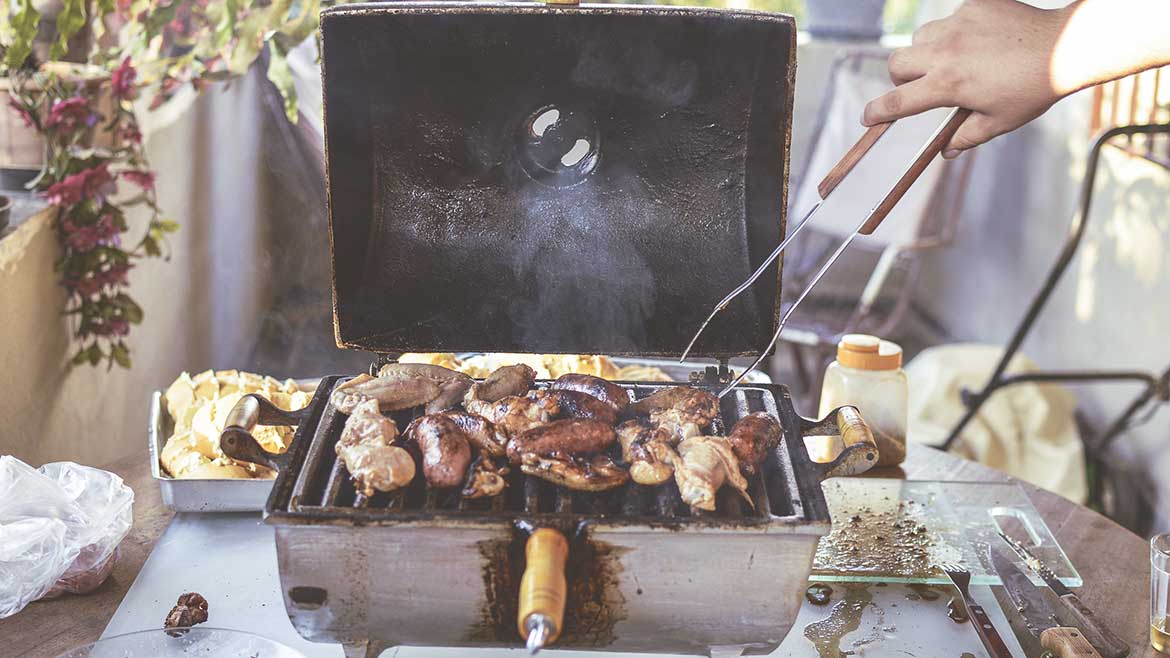
You can’t have a French barbecue without these 10 ingredients
Before I came to France I assumed the French were too sophisticated to barbecue, and that instead they probably ate coq au vin and croissants all year long. Turns out that’s not true. The French are super into barbecues, getting the firelighters out on a sunny day with the speed and desperation of Scotsman taking his top off in hope of a tan. In cities where outdoor space is scarce, expect to see (or smell) barbecues on balconies, rooftops, even illegally in parks and car parks. But what are the essential ingredients that make a barbecue français? And which British BBQ staple is most decidedly not on the list?
1. Merguez

These long, thin, alarmingly red sausages are an absolute must-have at a French barbecue. Heavy doses of paprika, spices and garlic give them a similar flavour and piquancy to chorizo; what sets them apart, however, is the meat used. Merguez are made from lamb or beef – which is great in that non-pig eaters can come to the sausage party – but which also has the unfortunate tendency of making them a little dry. Worse, in compensating for this lack of lusciousness, many manufacturers add too much fat which can leave you with a greasy sausage. That said, they remain a tasty, flavour-filled BBQ mainstay and are often served on baguettes, hot dog style, as seen in this magnificent opening scene to La Haine.
Please note that there is always one person at the barbecue who doesn’t like merguez because they are too spicy. Before you spit on them in contempt, remember that French people are not brought up on a diet of curries like British people and thus many have the taste buds of an ailing kittens.
2. All the other sausages

I’m now going to say something many Brits would consider unconscionable: I prefer French sausages. Lock me up in London Tower, your Majesty! In my experience they contain better quality meat, less suspicious filler ingredients and have a finer flavour overall. Top of the sausage pops has got to be the famous Toulouse sausage, often sold in a spiral shape which does not in any way remind me of a comedy poo because I am an adult. This is poo I MEAN spiral shape is excellent for barbecues because it won’t fall down in between the grills.
For children and the wimpily tongued barbecued attendees mentioned above, a favourite is chipolatas, both with and without herbs. Where sausages are concerned, your best bet is to avoid the supermarket and get down to your local marché instead. There you’ll find a whole host of varieties made from poultry, pork, boar (to name a few) and flavoured with as many cheese, wines, vegetables as you can shake your chapeau at. Experiment and find your new favourite.
3. Marinated meats

Great trays of meat coloured red, orange, green, yellow and brown by intensely flavoured marinades greet shoppers in summer. The French do use the classic smoky barbecue marinade but don’t fetishise it the way they do in some parts of the world (experts from the Southern states of the US might be disappointed by lacklustre flavours). And don’t expect modern new fangled flavours like sriracha, chimichurra or jerk seasoning. Don’t despair, however, as there is plenty of kick in alternatives, such as TexMex, Provençal, lemon and herb and North African spices. Travers de porc (ribs), poitrine (pork belly), échine de porc (pork loin) and cuisse de poulet (chicken thigh and drumstick) are popular choices of meat to marinade, being relatively cheap and in need of a taste boost.
4. Brochettes

Do you like dry meat, raw green peppers and lumps of fat that you mistake for onions? Me neither. Yet someone must because these kebabs (pictured above) are incredibly, mysteriously popular in France. Now I’m talking specifically about these red, white and green kebabs sold in great packs in supermarkets, like little Italian flags of disappointment. Avoid these at all cost. Instead, make your own, or buy prongs packed with all the yums from your local butcher’s shop.
5. Côte de boeuf

Le Roi du barbecue français. It doesn’t get better than an enormous lump of beef, oiled and lightly seasoned (too much marinade will distract from the natural flavour of the meat). This is an expensive cut of meat so don’t expect to see this at every barbecue; this is one for special occasions only. Given the quality of the ingredient, it’s essential that it’s cooked by someone who knows what they’re doing. Burning or overcooking would be a crime here.
6. Seafood and fish

Being surrounded by the English Channel, the Atlantic and the Mediterranean means there’s a large variety of fishy treats available to chuck on the barbie. Sardines, squid, red mullet spring to mind as popular choices, particularly in the south. Whether simply grilled or stuffed with herbs and pine nuts, it tastes of little more than summer on a plate.
For those not living near the coast – or those who prefer fewer bones to muck about with – there are imported fish like salmon, tuna and swordfish, all delicious marinated in little more than olive oil and lemon juice. Prawns can be threaded onto a kebab stick, whereas other shellfish can be placed directly onto the grill in their shell (oysters) or wrapped in a foil (mussels).
7. Vegetarian options galore (joke)

Expecting grilled halloumi and pepper kebabs? Marinated mushroom burgers? Good luck with that. Vegetarian guests at French barbecues will most likely be invited to try the salad. Or the bread. Vegetarianism isn’t as popular in France as in the UK so providing veggie alternatives just doesn’t occur to most French people. You could always speak to your host ahead of time and offer to bring something to avoid a disappointing, bread-based meal.
8. Rosé wine

Whereas in Britain rosé wine is marketed at the kind of women who are given birthday cards with handbags and high heels on them, in France it is drunk by everyone, including actual men. The rule is simple: if the sun is out then so is the rosé. And they’re right. Reds are generally too heavy in the heat of the afternoon (I say nothing for evening red consumption, you’d be mad not to get your red on with a juicy barbecued steak) and whites too subtle or acidic. A fruity, light, floral rosé hits all the right notes. Perhaps it’s also because of rosé’s association with les vacances, coming from popular holiday areas like Provence.
That said, I have a difficult relationship with rosé. When rosé is good it’s what I imagine pagan gods drinking during a bacchanal; when it’s bad it tastes like toilet. Even I, a person for whom wine all tastes the same after the first glass, have been known to reject a bad rosé. The other thing to be wary about is that rosé is incredibly easy to drink. “I’ve only had one glass… wait, no, actually it’s three. Oops.”
9. Tabbouleh

Contrary to what dieters on the Atkins thought in the early 2000s, humans can’t live on protein alone; it’s necessary to eat vegetables from time to time, if only for reasons of digestive health. A zingy, peppery summer salad is just the thing to refresh your palate after all that fatty meat. Another North African import, tabbouleh, made from parsley, mint, bulgar wheat, tomatoes, spring onions, olive oil and lemon juice, fits the bill perfectly. It is both light (compared with, say, potato salad) and substantial (versus a green salad). Your stomach will thank you for eating some.
Word to the wise: never buy those little tubs of tabbouleh from supermarkets. They have as much in common with real tabbouleh as Dürel’s 16th century wood carving of a rhinoceros has with a living, breathing beast. Which is to say little. Their ingredients may be similar but the proportions never are; supermarket version always have too great a ratio of bulgar to herbs. Tabbouleh should be a parsley salad with wheat, not the other way around. They also contain more oil than many a pie supper, which is not a good thing.
10. Charentais melons

Native to France, these melons are abundant in summer and one of the joys of summer. They may look like alien eggs with their peculiar veins covering their green/yellow skins but that’s the only repellent thing about charentais melons. Cut open they reveal a deep apricot flesh, dripping with juice. Heavily scented, sweet, musky – they’re practically obscene. Naturally they can be served as a dessert (who wants a complicated cake on a hot summer’s day?) or as a starter with some jambon de pays.
Fresh, delicious and cheap – what could be simpler? Well, this is France, so there is a trap. The melon needs to be perfectly ripe or there will be strong criticism. Too hard and it will be compared to an apple; overripe and noses will be turned up. It takes practice to be able to discern when a melon is ready to be eaten. The melon should have a subtle perfume (too heavy and it’s over) and the skin should give a little when pressed with your thumb. Or ask your friendly market greengrocer for melons that will be ready for the day you’re having your barbecue. They’re the experts after all.
So there we have it. Have I missed anything out? Do you have a case to make for the absence of burgers from this list? Or are there any regional favourites, like barbecued camembert that you’d like to see added? Let me know in the comments 🙂
Photo credits
Untitled by Alagich Katya. CC BY
Saucisses by Stijn Nieuwendijk. CC BY
Tonight’s dinner by Christopher Aloi. CC BY
Salut, c’est George Foreman by Phil. CC BY
Côte de boeuf au barbecue by new-york-city. CC BY
Oysters on the campfire by Ryan Harvey. CC BY
Halloumi burger by Jen Collins. CC BY.
Glass of rosé wine on the side of the pool by Jean-François Schmidz. CC BY
Cut up melon by David Amsler. CC BY

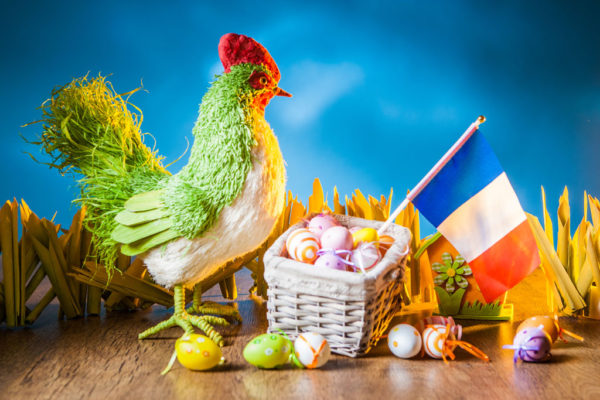

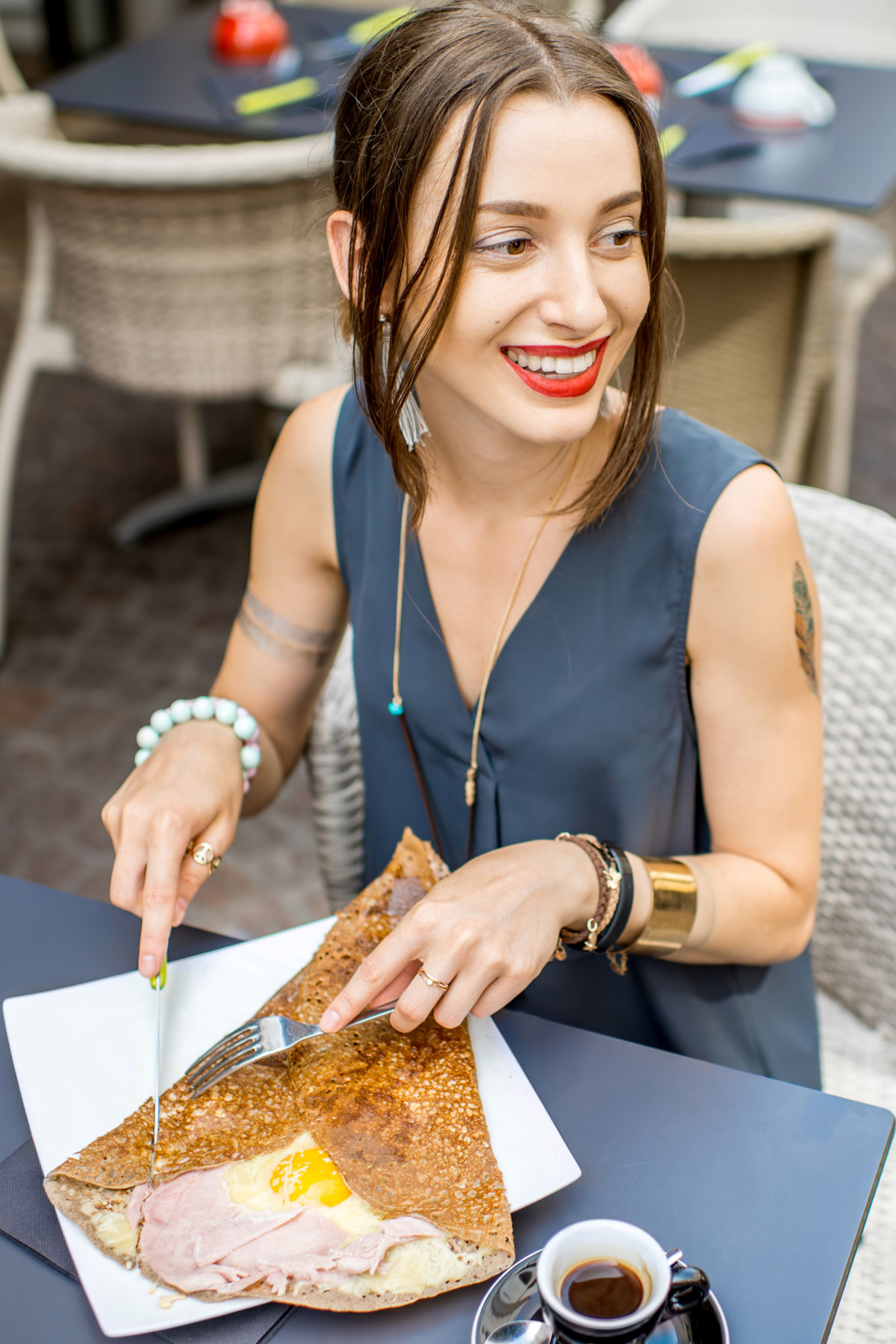
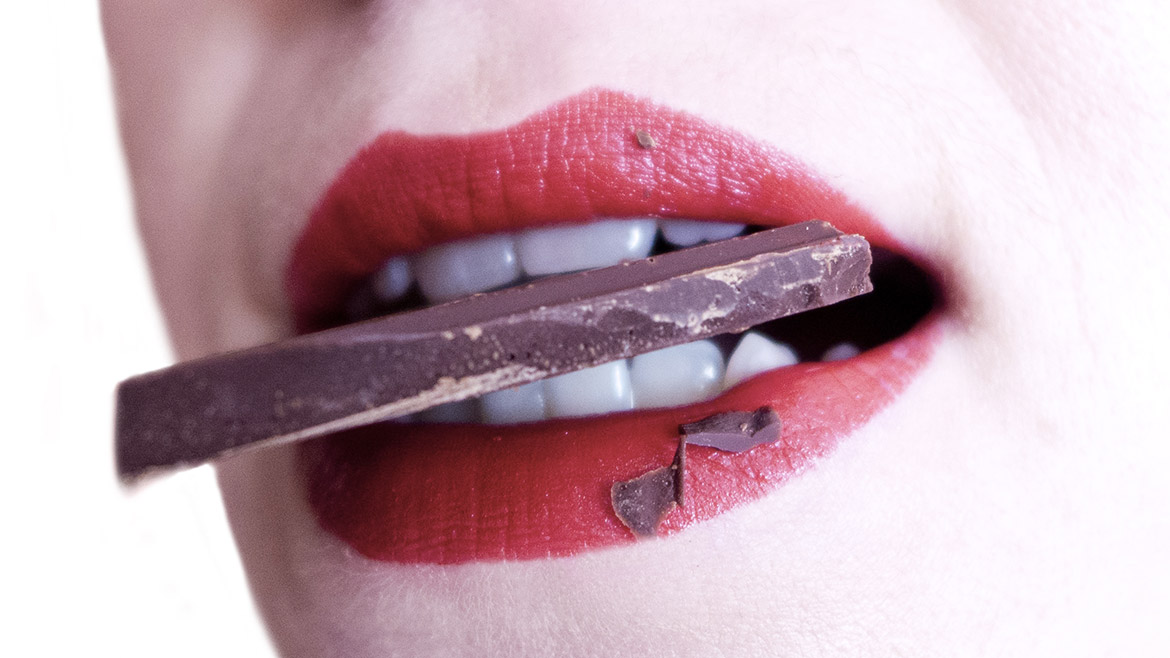
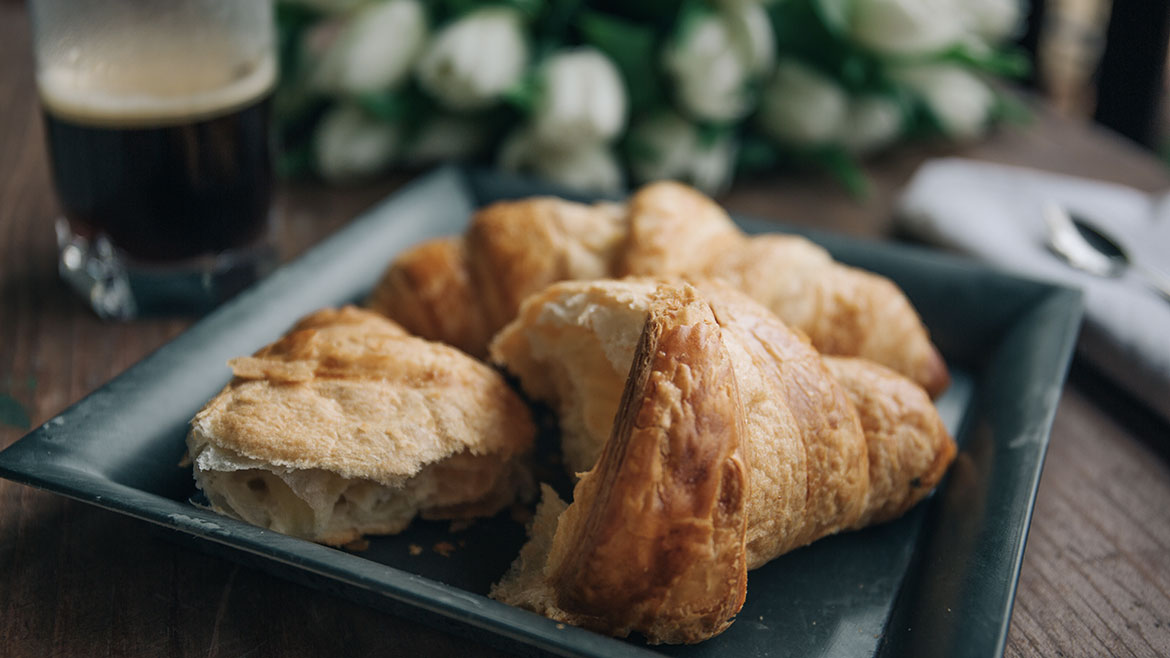
Diane
I was really confused the first time my in-laws went to the grocery store for BBQ fare and didn’t come back with hamburgers and instead got sausage, etc.. I learned really quickly that French people stick to the stuff you mentioned. Right on!
OUT OF PLACE
It’s strange that burgers aren’t really popular when you can get steak haché in shops/restaurants (on children’s menus anyway).
Blooming in Bordeaux
I randomly stumbled across your blog and just love it! Great post about French BBQs. We always have grilled Camembert and mix our rosé with grapefruit juice to make Rosé Pamplemousse. Miam, miam!
OUT OF PLACE
Thanks, I’m glad you like it! May I just say that I LOVE your grapefruit juice idea as not only am I a pamplemousse fan, it would also solve my rosé problems. First I could dilute the rosé and not accidentally drink too much and secondly it’s a great way of disguising bad rosé wine, a bugbear of mine. Great idea, thank you!
Pingback: 26 things that happen every summer in France – OUT OF PLACE
Pingback: 8 things you need to know before you go to a French campsite – BEST FRANCE FOREVER
BestWilliam
I see you don’t monetize bestfranceforever.com, don’t waste your traffic, you can earn extra cash every month with new monetization method.
This is the best adsense alternative for any type of
website (they approve all sites), for more details simply search in gooogle: murgrabia’s
tools